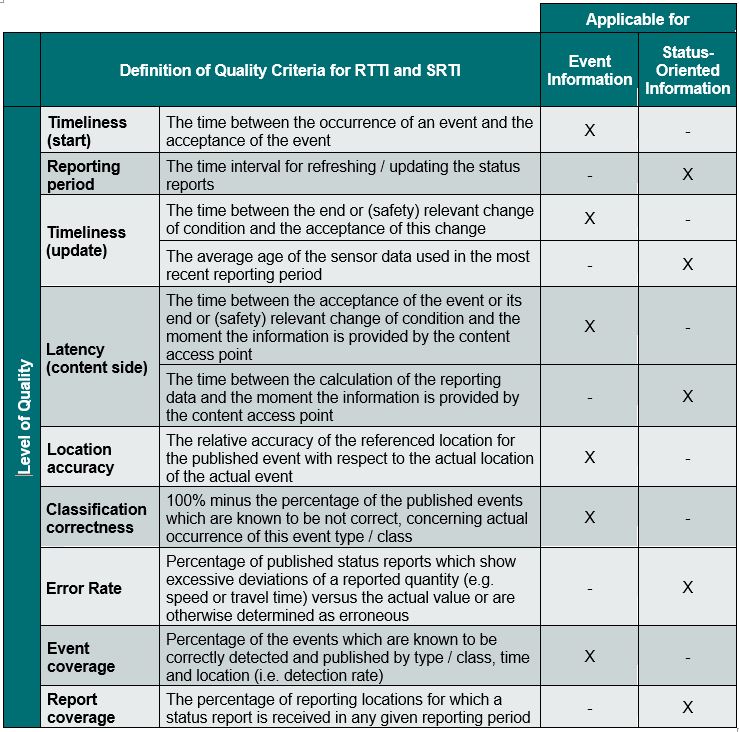Level of Service
Deployment Guidelines including Level of Services, for each of the Core European ITS Services, provides the information needed for road operators to ensure that implementations are made in support of European cohesion and defines steps in gradual improvement of the service in relation to the European ITS-Core Service Operating Environments.
Each of the Deployment Guidelines for traveller information have been developed using an information content based approach which lends itself to a description of the levels of service which are purely end user oriented in terms of information content. The levels of service therefore define the quality of the relationship to the user. The differences between the five information services mean that different criteria may be more important for different information services. To this end, each TIS DG includes a Level of Service table which recommends the end user orientated levels of service that should be progressed towards to assist in the realisation of interoperable, seamless and harmonised pan-European Services.

Levels of Quality
The data quality aspect is also vital for specification in terms of the levels of service as they are intrinsically linked. The ability for a traveller information provider to reach the levels of service recommended within Guidelines DG02 to DG07 is dependent on a level of data quality being reached. Similarly to Levels of Service due to different data requirements for all the services each Guideline DG02 to DG07 includes a data quality table with proposed levels of data quality which should be progressed towards to assist in the realisation of interoperable, seamless and harmonised pan-European Services. Some Guidelines are more advanced in this respect than others, and it is an area to be progressed in future revisions. An example of different data requirements is found when comparing the optimum level of traffic speed data packets required for travel time information which may be as small as 1 minute, with that for traffic condition information data, and that of planned events where it is unlikely data will be required to be updated as frequently.
The tables within Deployment Guidelines DG02 to DG07 outline the recommendations of ESG1 for the most important aspects of the Levels of Service and the Levels of Quality for the data “backbone” for each traveller information service. It is believed that progress through these levels will lead to harmonised deployment of traveller information services. The need for a requirement to progress to the next level is inherent in the philosophy of deployment towards harmonisation although progress “up” these levels towards more harmonised services should only be undertaken if deemed necessary by the implementation body. The tables within Deployment Guideline Documents DG02 to DG07 also provide the recommended levels of service which deployment should strive towards within EasyWay II. However progress beyond these levels is still important when the requirement exists.
Definitions of the Core Level of Service and Level of Quality Criteria for all ESG1 Deployment Guidelines are given in Table 9 below. DG02 to DG07 Guidelines have chosen the most relevant Core Criteria from these tables and also added service specific criteria. Service specific LoS and LoQ criteria are defined in the respective Guidelines.
